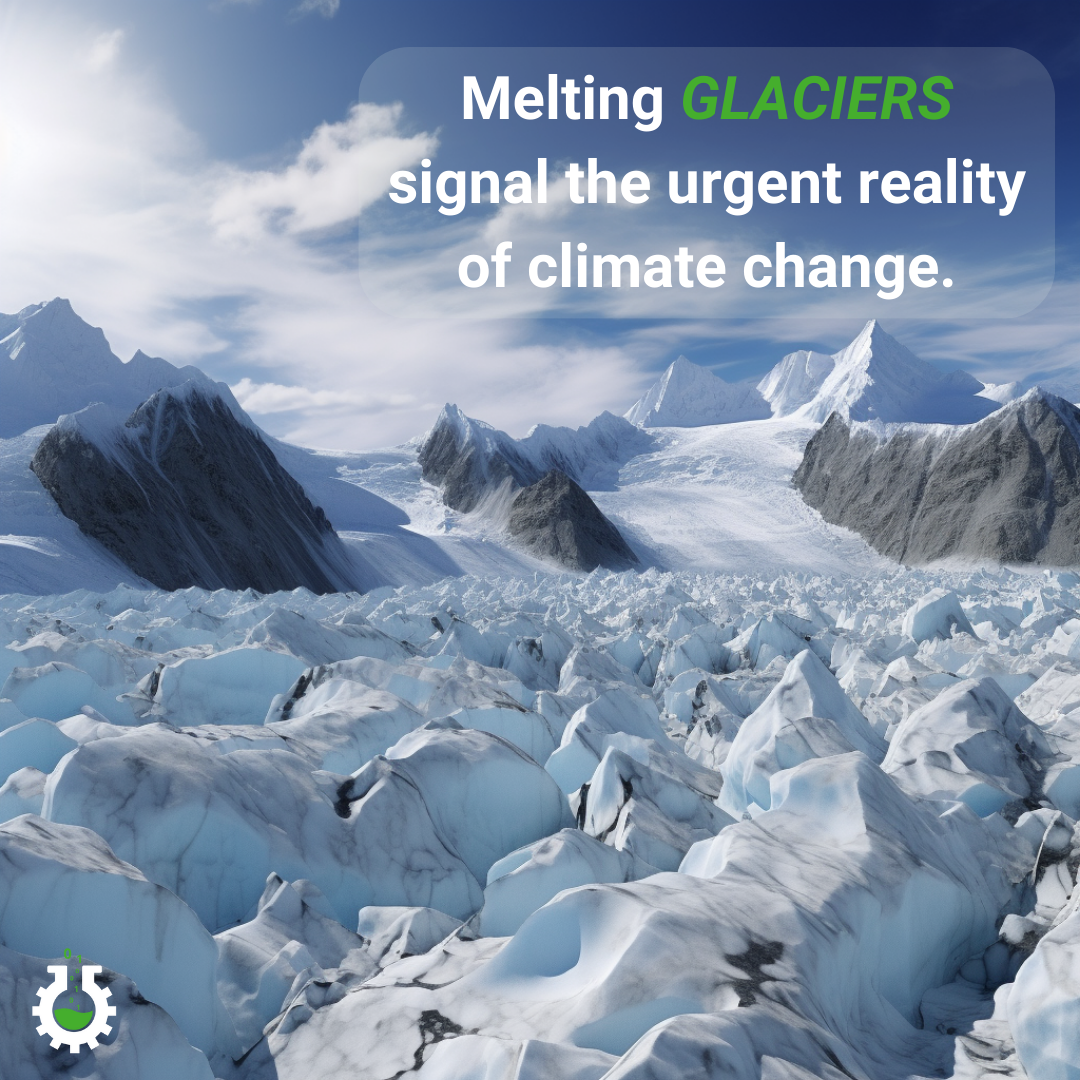August 1, 2023
Climate Change Poster Collection of the Day – Glacier
Book a Demo
Formed from accumulated snowfall, glaciers are formidable, slow-moving rivers of ice. These majestic formations can be found in mountain ranges and polar regions across the globe. The creation of a glacier is a process that demands more snowfall in winter than melting in the summer. This imbalance leads to the formation of dense, partially air-free ice over time, as the excess snow compacts under its own weight.
Glaciers are not static entities, but are in constant motion, driven by their substantial weight. They flow downhill, reshaping landscapes as they move. They are the architects of various landforms such as cirques, moraines, and kettle lakes. As they carve their path, they leave behind a changed world, demonstrating the dynamic nature of our planet.
In terms of water storage, glaciers play an essential role. They hold approximately 75% of the world’s freshwater, making them integral to Earth’s water cycle. This vast store of frozen water means that glaciers can significantly affect sea levels when they melt.
The role of glaciers extends beyond water storage. As they expand and contract in response to temperature and precipitation changes, glaciers serve as crucial climate indicators. Scientists can examine their layers for climate data, much like a tree’s rings reveal its history.
Persistent and dense, glaciers form over centuries in areas where snow accumulation exceeds its removal or ablation. This makes them the world’s largest freshwater reservoir. They cover about 10% of the land surface near Earth’s poles and are found on every continent’s mountain ranges, except for Australia.
Glaciers also hold invaluable information about our planet’s climatic history. They are indicators of temperature, precipitation, and prevailing wind changes, contributing valuable data to the study of climate change. This process of glacier formation, growth, and flow is referred to as glaciation. The associated field of study that seeks to understand these icy behemoths is called glaciology. In essence, glaciers are more than just rivers of ice; they are key players in our planet’s climate, water cycle, and geological transformations.
Discover an inspiring collection of climate change posters.



